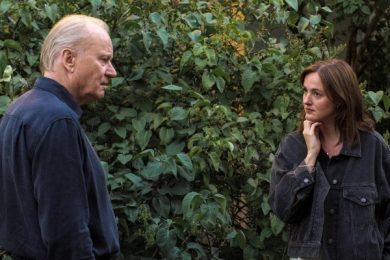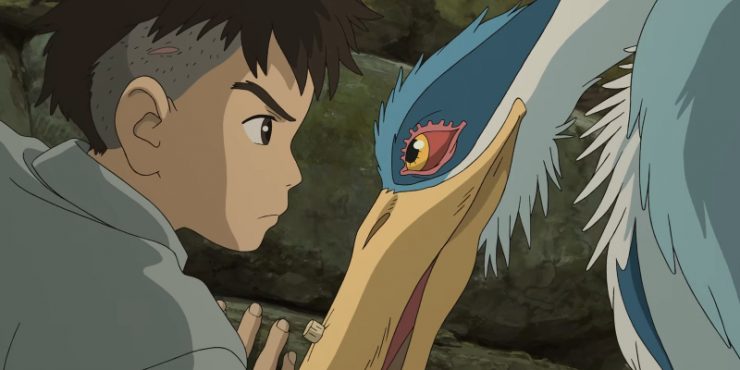Retirement for legendary artists, especially in the film world, should always be taken with a grain of salt. I don’t think many people really believed that Hiyao Miyazaki was done making films after 2013’s The Wind Rises, though we did make it event just in case. Ten years later, the master animator comes out with The Boy and the Heron, a movie that is in many ways about coming to terms with the fact that you can never really reconcile your life’s work in a comfortable way. Miyazaki’s hand-drawn style feels almost like a novelty in 2023, where commercial animated films have completed given themselves over to CGI, but this is more than just commitment to tradition. A Miyazaki film – even to a skeptic like myself – is a journey to an unknown world, so far outside the comprehension of Hollywood that it’s thrilling to behold.
Miyazaki’s movies have often left me at arm’s length. His extensive use of metaphor can leave you adrift, where all there is to hold onto is the unparalleled beauty of the imagery. My Neighbor Totoro and Princess Mononoke are his most approachable films, while Spirited Away, Howl’s Moving Castle, and The Wind Rises point toward a storyteller of depth and feeling. The surreal touches always remind you to never feel comfortable on the physical reality, and to prepare for the unexpected. The Boy and the Heron is a script that stacks its themes tenuously (which the movie makes direct and explicit reference to), and per usual, Miyazaki shrouds them in metaphors that allow him to craft various creatures ranging from the adorable to the grotesque. There’s an impenetrability to the story at the start, which doesn’t come into full view until its conclusion, which reveals itself in full clarity.
The story is about a young boy named Mahito living in wartime Japan. After his mother dies in a hospital fire, his father Shoichi marries Natsuko (the mother’s younger sister) and they all move to an estate in the country. Steeped in grief and reeling from his father’s quick romantic turnaround, Mahito struggles to adjust to his new surroundings, watched over by seven elderly maids. When Mahito sees a grey heron fly by, Natsuko acknowledges the rarity of the appearance. Later on, the heron begins speaking to him, stating that his mother is still alive, and that he can guide him to her. Shocked but intrigued, Mahito follows the heron into a mystical world where he meets a fearless woman sailor, a mystical sorceress, and en entire horde of antagonistic parakeets. The way these characters connect to the actual world reveal themselves over time, as Mahito’s journey to discover the truth only strengthens his sense of purpose in his real life.
The Boy and the Heron is probably the most beautifully crafted film you’ll see this year. Even with his reputation, it’s still incredible to see the level of depth and precision that Mayazaki is able to develop in hand-drawn animation, with breathtaking sequences that put most CGI animation to shame. Miyazaki’s story was often difficult to untangle, though he does do us the courtesy of giving us full understanding by the ending, which is genuinely moving in its blatant self-reference. It’s occasionally burdensome the way he takes such complex routes toward such simple observations, but it’s also the thing that separates him from most filmmakers, particularly in the world of animation. Envisioning the platform more than just a service for children, Miyazaki’s films are rich with meaning, it’s just that sometimes you really have to work to find it.
Written and Directed by Hiyao Miyazaki










